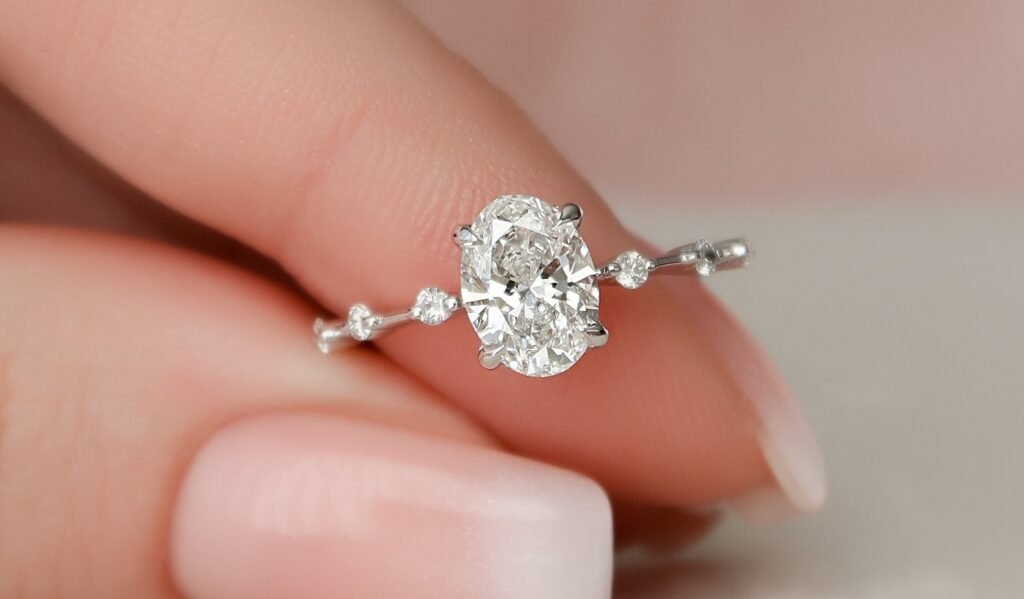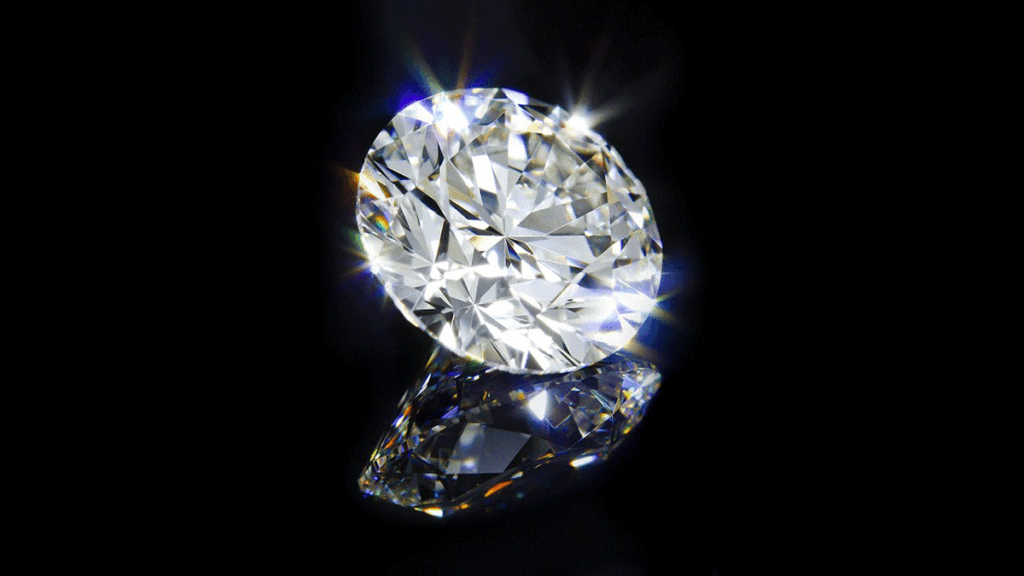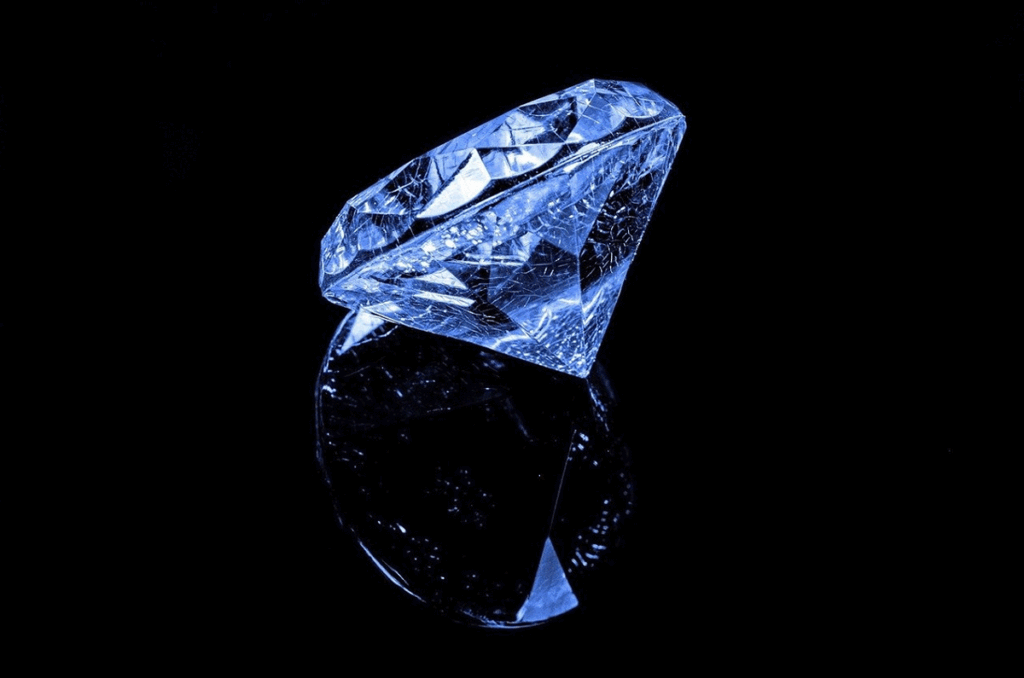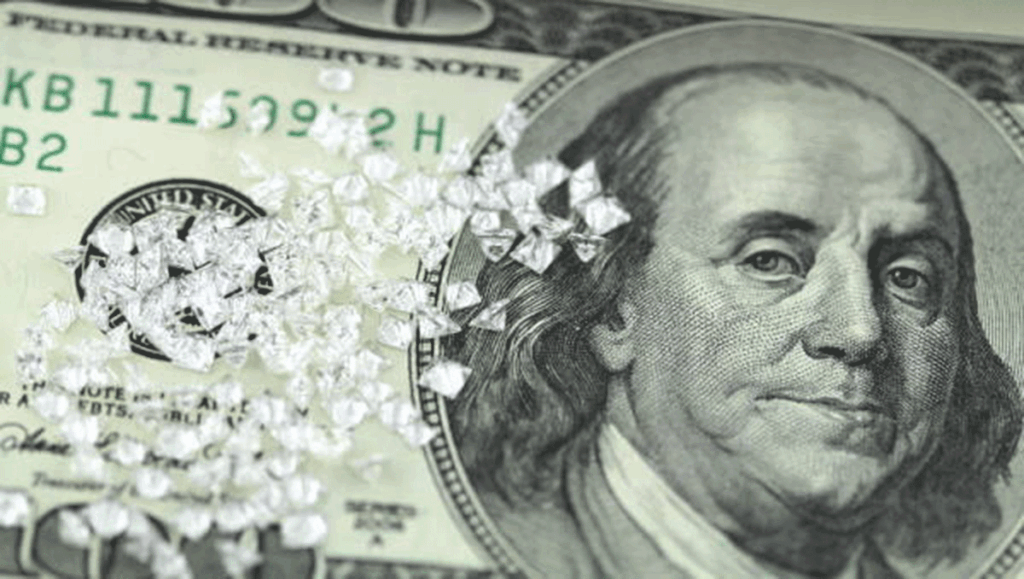How Much Are Diamonds Worth
When it comes to diamonds, “worth” has two meanings. One is the “price”, and the other is its “value.”
While most people take them as the same, they are not.
For example. The diamond prices chart below plots the price per carat of a round, excellent-cut, H in the diamond color and V2S in clarity.

It shows how much a diamond is worth on a per-carat basis. Getting the price of other diamond cuts and carats can be easily done using a diamond price calculator—provided you have input on the shape, carat size, color, clarity, cut, and fluorescence.
Using this diamond price calculator is the easiest way of knowing “what is the actual price of diamonds” at any given time.
Diamond value, however, cannot be expressed in explicit terms. Dozens of factors come into play in determining its value. Regardless, they can all be lumped together into one—appeal. A diamond’s value is set by its charm. And to determine what makes a diamond more appealing, gemologists use the GIA’s (Gemological Institute of America) grading system – the 4Cs of diamonds.
The 4Cs stand for cut, color, clarity, and carat. Before the establishment of the 4Cs, diamond dealers referred to dozens of several factors to determine a diamond’s price and appeal. Now you, too, can appreciate how diamond prices are set. Read on.
Price of 1-carat Diamond
How much is 1 carat diamond worth today?

Depending on the shape, a 1-carat diamond is typically 6.5 mm in diameter. In the market, it costs between $ 1,000 to $ 12,000, which you can get from any jeweler’s diamond price list.
This void between the price gap is filled in by its value. Remember that price is not the sole determinant of a diamond’s worth. As mentioned earlier, some factors come into play in determining its actual value. Take for example the piece in this Michael M review.
Factors Affecting Diamond Price
Just like any commodity, diamond prices change from day to day. Market trends, time of the year, etc., can cause these price fluctuations. In addition to that, diamond shapes, origin, diamond grades, and the 4Cs.
Here’s why:
Clarity
Though clarity has a lesser impact on diamond prices, it still can bring the price up or down.

Clarity refers to a diamond’s natural inclusions or lack of it. VVS1 (very slight inclusion) diamond price varies from an IF (Internally flawless).
Color
Color refers to the color of light reflected off a diamond. It can be pure white or colorless to yellow.
Pure white diamonds are priced at a premium. Prices start going down proportionately as the color grade goes down.
Cut
The price per carat goes up as the diamond quality goes higher. This is because more rough material is removed to achieve better cut proportions and symmetry. In addition to that more labor is spent cutting and polishing the stone to near perfection.

There are several cuts in the market, but the round brilliant is the most expensive.
Carat weight
Considering other things being equal, i.e., color, clarity, and cut, the bigger the diamond, the higher the price per carat. This is because larger diamonds are more difficult to find than small ones. Bear in mind that the average size coming out of diamond mines is 0.10 carats. And only 20% of all mined diamonds are gem quality.
Other Factors Affecting Diamond Price
Aside from the 4Cs, the diamond price can be affected either by the inherent properties of the stone itself or its cut.
Stone-related Factors
Fluorescence
Fluorescence is the visible or invisible light emitted by some substances, like diamonds, after exposure to UV light.

All mined diamonds fluoresce to varying degrees. This is due to the presence of phosphorous in the internal structure of the diamonds. Though fluorescence can enhance a diamond’s whiteness and brilliance, too much can make it appear murky in normal light.
It should not be automatically ruled out as detrimental to the beauty of the diamond, but it somehow affects the price.
Lab-grown diamonds
Lab-grown diamonds, also known as synthetic or created diamonds exert a strong downward pull on natural diamond prices.
They are almost identical to mined diamonds, i.e., in hardness, brilliance, crystal structure, and chemical properties. Burt can be manufactured in any quantity in a matter of weeks.
However, anyone selling these types of diamonds must indicate that they are not natural.
Social, ethical, and environmental responsibility
Mining diamonds, per see, is not entirely unethical. But the practices of some mining companies are.
Typically found in poverty-stricken areas of the world, mining companies hire disadvantaged children on a per-piece basis without any rights and benefits whatsoever. They discharge their mining wastes without regard for the environment. To top it all, some mining companies are paying protection money to armed groups waging political wars against the local governments mining companies are operating.
These problems prompted legitimate diamond companies to form the Kimberly Process Certification Scheme to make it mandatory for member companies to certify diamond shipments as “conflict-free” to prevent conflict diamonds from entering the legitimate diamond business.
Color enhanced
Diamonds with non-uniform original color are color-enhanced to give them an even tone. The HPHT (high pressure, high temperature) process is used whereby diamonds are subjected to extremely high pressure and temperature to change their color artificially.
Color-enhanced diamonds have less value than natural diamonds because the color enhancement will wear off over time, impacting their beauty and longevity.
Fractured filled
This is a process of injecting a chemical compound into a fracture in a diamond (fractures that reach the surface of the stone).
Though the process artificially enhances the clarity of a diamond, nevertheless, its value is still lower than that of a natural diamond. Fractured-filled diamonds are also susceptible to fractures due to daily wear because of their inherent defect.
Laser-drilled
To make diamonds look inclusion-free, some jewelers use lasers to drill to the inclusion, then fill it with acid to remove the carbon impurities embedded in the stone.
Though lasers can fix the inclusion problem, it leaves behind a thin line that destroys a diamond’s natural beauty.
Cut-related Factors
Crown angle
The crown is the top portion of the diamond. Below that is the girdle – the most significant part of the diamond seen from the top. The crown angle is the angle of the slant between the girdle and crown diameters.
This angle must be the same along the entire periphery of the stone as it affects how the diamond handles light.
Culet size
The culet is the bottom point of the diamond. The culet is lightly flat (faceted) in well-proportioned stones. This is to make it appropriately interact with the other facets of the stone—reflecting light in many directions.
A large culet will diminish the light performance of the diamond, causing the appearance of a black hole in the bottom of the gem.
Culet angle
In a perfectly symmetrical diamond, the culet should be at the dead center of the stone and should measure 98.5 degrees. A deviation from this value will diminish the brilliance of the stone.
Table width percentage
A diamond’s table is the flat surface at the top (crown) of the diamond. And its diameter should be between 53 – 57% of the girdle diameter. The light will not play off any of the diamond’s angles and facets if it is too large. It will not produce the sparkly rainbow of colors in well-cut proportioned stones.
If it is too small, any shaft of light going into the stone will not create that attention-grabbing effect of beautifully-cut stone. It will just leak out through other places in the diamond.
Depth percentage
This is the ratio of the diamond’s total depth (between the crown or table to culet) against its total diameter (girdle).
If this ratio is too large or too small, the diamond will look dark because it no longer returns an attractive amount of light.
The above are but a few factors that impact diamond prices. There are more, but they are so technical for an initiated buyer like you. At any rate, any jeweler worth his salt can guide you through the nitty gritty of diamond prices and the factors that drive them up or down.
There is, however, a bit of silver lining when it comes to diamond prices. They are generally going down. Here’s why…
Diamond Prices are Falling
Are diamonds falling in price?
The global diamond market was at $94.96 billion in 2021. It was projected to reach $ 139.91 billion by 2030. Barely two years have passed, and the projection is no longer as rosy as before.
According to Bloomberg, diamond prices have been falling for the past two years and are at their lowest since the financial crisis in 2008. While this may cause new buying opportunities for diamond lovers, it doesn’t bode well for suppliers. And they are still trying to figure out “Why?”
According to market analysts, two primary reasons are causing this. They are:
China
Over the past few years, diamonds became a trendy investment commodity and gift option in China. In fact, the country is the second-largest diamond market in the world, next to the United States.
Then the Chinese government created a stimulus monetary policy to recover from the prolonged drought due to the Covid19. It put measures supporting the property market in place and minimized crackdowns on Chinese tech companies. All these resulted in the Chinese stock market bull run.
As the Shanghai index continued to climb, many Chinese investors switched from buying diamonds to buying stocks. This caused the stock market to overheat and crash. The resulting inflation forced the devaluation of the Yuan and the massive sell-off of huge Chinese diamond inventories—creating an artificial over-supply.
Low global demand
Just like anything, diamond prices are affected by the mechanics of supply and demand. With a high global inventory but low demand, the prices naturally go down for both polished and rough diamonds.
In 2015, De Beers, the largest diamond producer in the world, lowered prices and production to stimulate demand. Unfortunately, the timing was terrible. Countries like Russia, Israel, and even the U.S. also experienced declining demands.
How to Beat the Diamond Price
The decline in diamond prices does not mean you should go on a buying binge of these precious stones. No matter how small, “money saved is still money earned.” Here are some simple strategies to do it.
Go lower in carats
The naked eye can’t tell the slight difference in carat weights. If you are looking for a 1-carat diamond, buy a 0.90 carat; if 2.0 carat, buy a 1.90. You will be amazed at how much money you save by going lower.
Color
Diamond color grades range from D to Z. While there is a marked color difference between the extremes, you can hardly tell the difference between a D and F. So choose your colors wisely. Nobody will notice the difference between the two close grades.
Clarity
Diamonds are not perfect, and those that approach perfection are extremely rare and expensive. Where clarity is concerned, go for diamonds considered “eye clean.” They have inclusions but are too small for the naked eye to notice.
Shape
Diamond shape play a huge part in pricing. Round diamonds are sought after and more expensive. So if you want to save a few bucks on your budget, go for the cushion or oval shape. They are just as adorable and cost much less.
Diamond prices will soar again
Diamond prices, while currently on a downward trend, shall remain volatile over the long haul, So if you are in the diamond investment mode, now is the time to build up inventory. Good times never last long. History shows that diamond price slumps seldom last more than two years. Before you know it, diamond prices will again be too high to reach.

